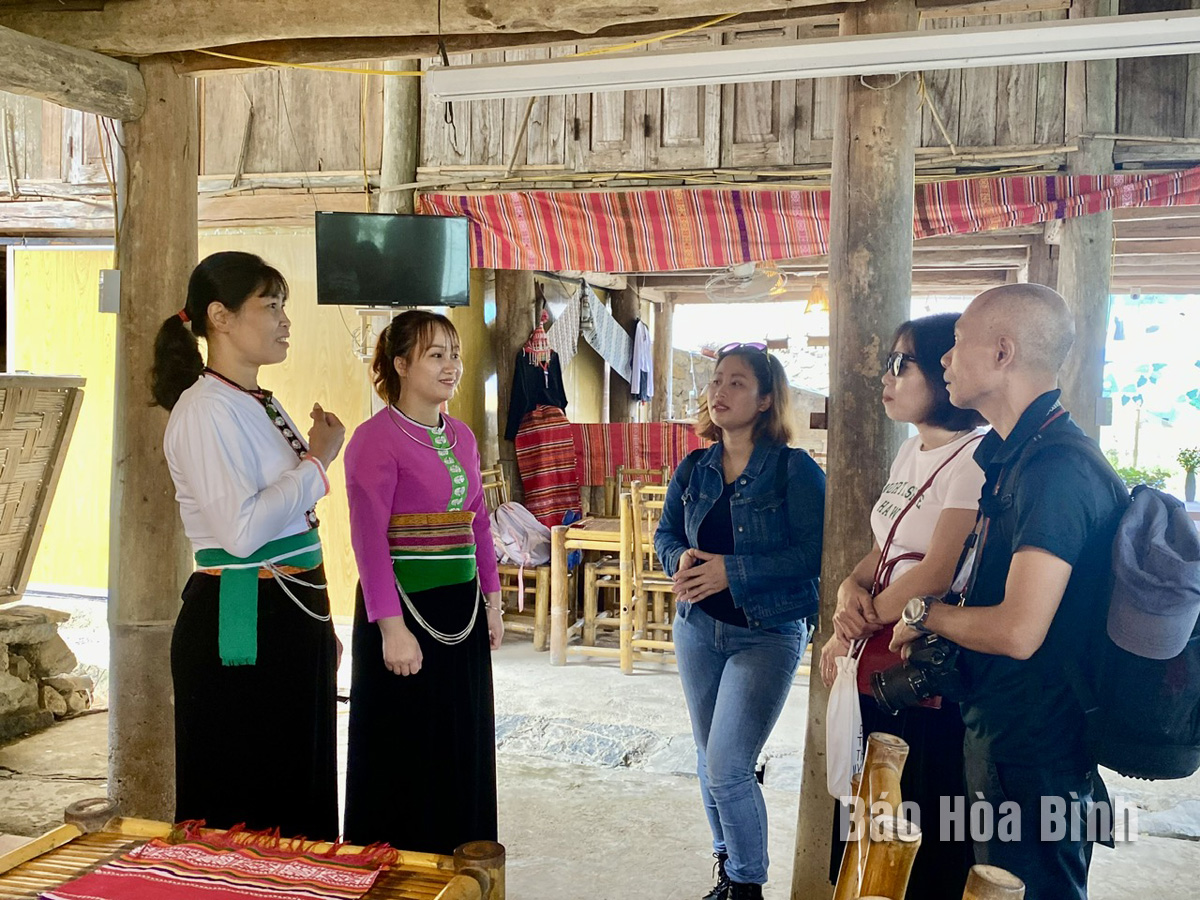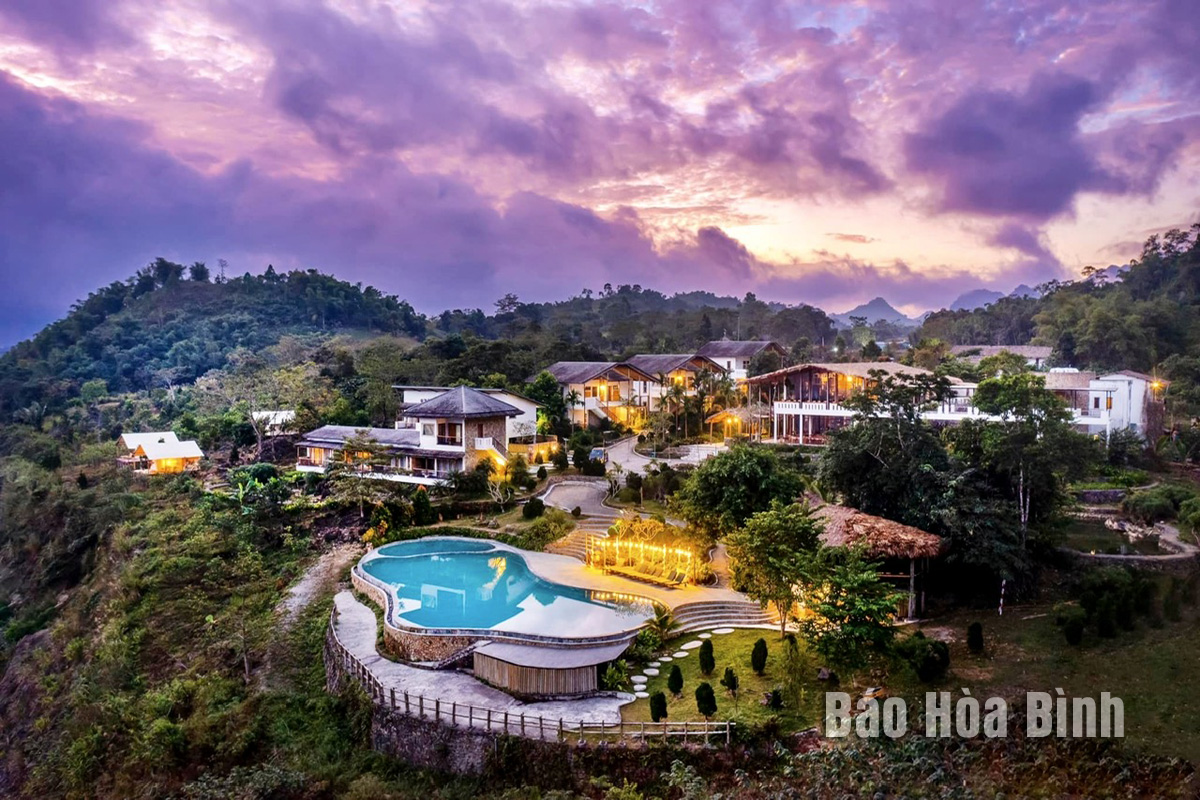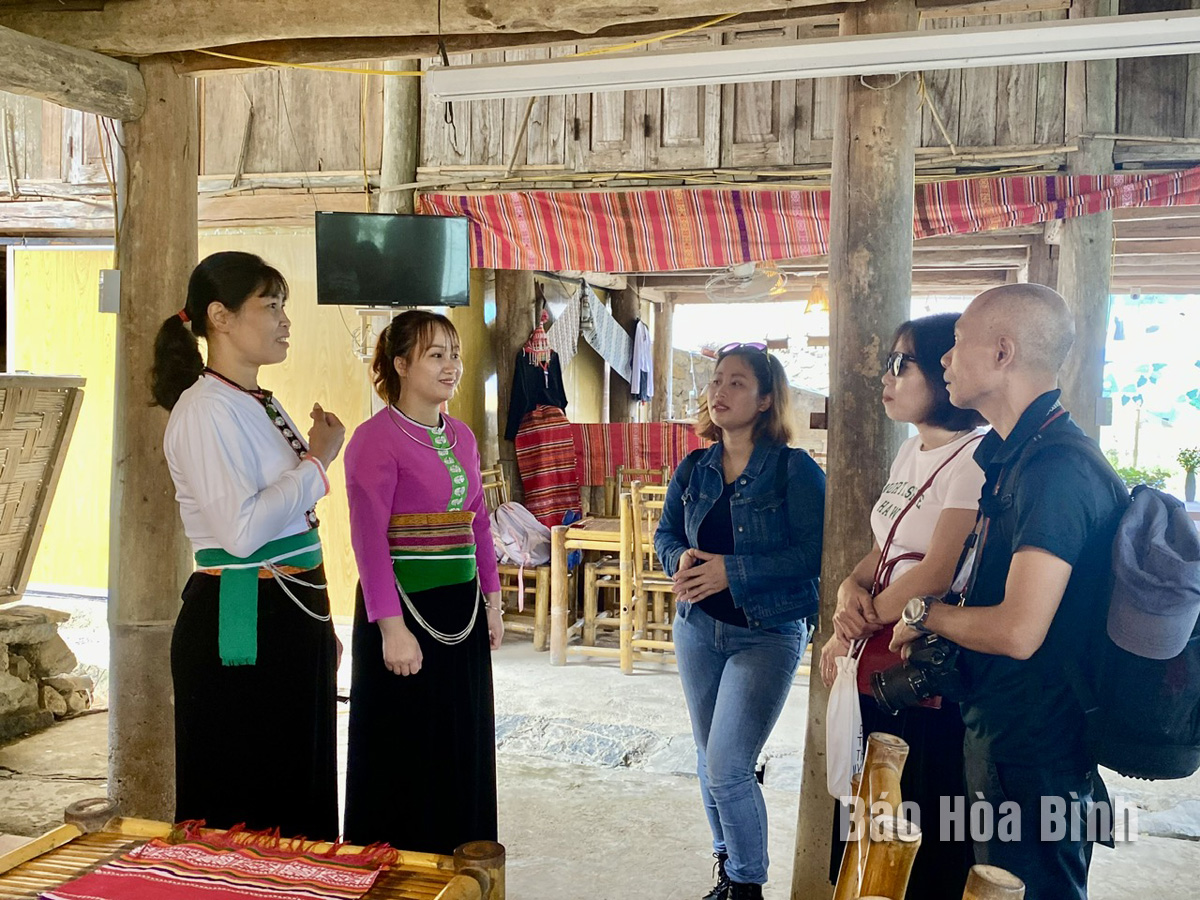
The Hoa Binh lake tourism area has strengths to attract visitors, particularly those who are interested in resort tourism and community-based tourism.

Ba Khan village resort in Son Thuy commune, Mai
Chau district, Hoa Binh province.

Tourists learn about the daily activities of people
in the Da Bia community-based tourism area in Tien Phong commune, Da Bac
district.
Maida Lodge is a destination that has effectively adopted
eco-resort tourism products. Located in the Hoa Binh lake area, the destination
is liked thanks to the surrounding harmonised landscape of the lake, limestone
mountains and vast bamboo forests. It also provides high-quality resort
services, particularly a transport combo of shuttle buses and sightseeing
boats, family rooms, and culinary services at its restaurant which offers
various local specialities.
Meanwhile, community-based tourism products in the Hoa
Binh lake tourism area provide visitors with great experiences and knowledge
about the land, culture and local people.
Well-known community-based tourism destinations include
the Da Bia and Mo Hem villages in Tien Phong commune, Sung village in Cao Son
commune, Ke village in Hien Luong commune, Ngoi village in Suoi Hoa commune and
Mo village in Binh Thanh commune.
Community-based tourism in the Hoa Binh lake tourism area
offers visitors opportunities to stay at traditional houses, visit craft
villages, learn about local customs and traditions, and participate in daily
activities such as fishing, growing vegetables, harvesting rice, weaving
baskets, or making cakes. Water sports activities like sailing, rafting, and
kayaking are also available. Some localities also organise traditional
festivals to offer visitors more experiences.
Bui Xuan Truong, Deputy Director of the province’s Department of Culture,
Sports and Tourism, said that resort tourism and community-based tourism are
typical and attractive tourism products in the Hoa Binh lake tourism area. With
the advantages of climate, terrain, and landscape, the tourism area brings
unique and new experiences to visitors, thus contributing to boosting the
province’s tourism and socio-economic development.
Besides existing resorts like Mai Chau Hideaway, Ba Khan
Village Resort in Mai Chau district; Xoan Retreat, Maida Lodge, Vayang, and Mo
Village in Da Bac district, more resorts are being constructed.
The presence of several 4-5-star resorts with many
services such as yachts, kitesurfing, paragliding, windsurfing, water park,
commercial centres, outdoor swimming pools, sports areas, restaurants, and spas
contribute to attracting customers to the Hoa Binh lake area.
Located just a 20-minute drive from Hoa Binh City, Ora Hill Farmstay & Glamping Hoa Binh is a captivating new destination nestled in Mo hamlet, Bình Thanh commune, Cao Phong district. Combining farming with leisure, this tranquil retreat is perfect for those seeking balance, joy, and an immersive experience in the expansive beauty of nature.
Muong Bi - Tan Lac is renowned as one of the four famous Muong regions in Hoa Binh province. Blessed by nature with a favourable climate and stunning landscapes, Tan Lac holds great advantages for tourism development. The local tourism industry has made remarkable strides in recent times thanks to the attention and support from the local authorities and sectors.
With its strategic location, well-developed transport network, and diverse soil and climatic conditions, Hoa Binh is emerging as a must-visit destination in Vietnam's northwestern tourism corridor. The province boasts numerous attractions, including the Kim Boi hot springs (Kim Boi district), the Dau Rong cave complex (Cao Phong), the Mai Chau valley (Mai Chau), and the iconic Hoa Binh hydropower plant.
The northern mountainous province of Hoa Binh has been listed among the 71 most beautiful places to visit worldwide by the prestigious US travel magazine Condé Nast Traveller.
Hoa Binh province’s rich natural and cultural resources position it as a prime location for developing community-based tourism (CBT). In recent years, support from central and provincial policies, as well as assistance from non-governmental organisations, have encouraged local ethnic minority and mountainous communities to actively engage in the sector.




